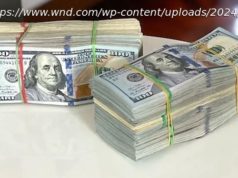His initiatives do not include his campaign pledge to use the massive buying power of the government’s Medicare program to directly negotiate lower prices for seniors.
WASHINGTON – President Trump’s long-promised plan to bring down drug prices, unveiled Friday, would mostly spare the pharmaceutical industry he previously accused of “getting away with murder.” Instead he focuses on private competition and more openness to reduce America’s prescription pain.
In Rose Garden remarks at the White House, Trump called his plan the “most sweeping action in history to lower the price of prescription drugs for the American people.” But it does not include his campaign pledge to use the massive buying power of the government’s Medicare program to directly negotiate lower prices for seniors.
That idea has long been supported by Democrats but is a non-starter for drugmakers and most Republicans in Congress.
Democratic Rep. Chellie Pingree, of Maine, criticized the Trump administration for abandoning pledges to let the federal government’s Medicare program negotiate lower drug prices and to allow drugs to be reimported from Canada.
Pingree said she believes consumers will not see any relief from rising drug costs unless both of those steps are taken.
Democratic Rep. Lloyd Doggett of Texas dismissed Trump’s plan as “a sugar-coated nothing pill.”
U. S. Sen. Susan Collins, R-Maine, chairman of the Senate Aging Committee and a member of the Senate Health Committee, called the administration’s plan an encouraging step forward. She has led bipartisan efforts in Congress to increase the affordability and accessibility of prescription drugs.
In a statement Friday, she said, “Last month, I introduced two bills that would prohibit health insurers and pharmacy benefit managers from using so-called ‘gag clauses,’ which some companies use to forbid pharmacists from proactively telling consumers if their prescription would cost less if they paid for it out-of-pocket rather than using their insurance. I was pleased to hear the president condemn this egregious practice during his remarks this afternoon.”
Under Trump’s plan, the administration will pursue a raft of old and new measures intended to improve competition and transparency in the notoriously complex drug pricing system. But most of the measures could take months or years to implement, and none would directly stop drugmakers from setting sky-high initial prices.
Drugmakers generally can charge as much as the market will bear because the U. S. government doesn’t regulate medicine prices, unlike most other developed countries.
In addition to banning the pharmacist “gag rule,” the list of 50 proposals includes:
• A potential requirement for drugmakers to disclose the cost of their medicines in television advertisements.
• Speeding up the approval process for over-the-counter medications so people can buy more drugs without prescriptions.
• Consider changes to how Medicare pays for some high-priced drugs administered at doctors’ offices.
Those ideas avoid a direct confrontation with the powerful pharmaceutical lobby, but they may also underwhelm Americans seeking relief from escalating prescription costs.
Several consumer groups and Democrats in Congress criticized Trump for not following through on pursuing direct Medicare price negotiations, as he had long promised.
Perhaps the idea under consideration that would be most threatening to drugmakers is to give the private health insurers who run Medicare plans more negotiating power with them. But administration officials offered few specifics on how that might work.
Pharmaceutical investors and analysts expressed relief after the announcement, and shares of several top drugmakers rose slightly.
“Trump had a choice today: to seek disruptive fundamental reform or to embrace more incremental steps,” wrote Terry Haines, a financial analyst, in an investment note. “Trump chose the incremental over the disruptive.”
A majority of Americans say passing laws to bring down prescription drug prices should be a top priority for Trump and Congress, according to recent polling by the Kaiser Family Foundation.
As a candidate, Trump railed against the pharmaceutical industry. But as president he has shied away from major changes and has staffed his administration with appointees who have deep ties to the industry. They include Health Secretary Alex Azar, a former top executive at Eli Lilly and Co., who joined Trump for Friday’s announcement.
Azar and other Trump officials have hinted for weeks that the plan would, in part, “dismantle” the convoluted system of discounts and rebates between drugmakers and the health care middlemen known as pharmacy benefit managers.
Trump called out those companies early in his speech, but gave no details on what new restrictions or penalties they might face.
“We’re very much eliminating the middle men,” Trump said.
But Azar later told reporters that the administration would “seek input” on doing away with drug rebates in the Medicare system to encourage more direct discounts.
“It took decades to erect this very complex, interwoven system,” Azar said in a briefing following the speech. “I don’t want to overpromise that somehow by Monday there’s going to be a radical change, but there’s a deep commitment to structural change.”
Public outrage over drug costs has been growing for years as Americans face pricing pressure from multiple sources: New medicines for life-threatening diseases often launch with prices exceeding $100,000 per year. And older drugs for common ailments like diabetes and asthma routinely see price hikes around 10 percent annually. Meanwhile Americans are paying more at the pharmacy counter due to health insurance plans that require them to shoulder more of their prescription costs.
Experts who study drug pricing are encouraged that the discussion has moved on from angry protests to more sophisticated proposals.
But others warn there is no guarantee that unraveling the current pricing-setting bureaucracy will lead to lower costs because it all starts with drugmakers’ initial prices.
America has the highest drug prices in the world.
The U. S. spent $1,162 per person on prescription drugs in 2015, according to the Organization for Economic Cooperation and Development.
Домой
United States
USA — Financial There are few teeth in Trump’s plan to reduce prescription drug prices






